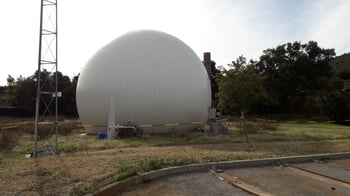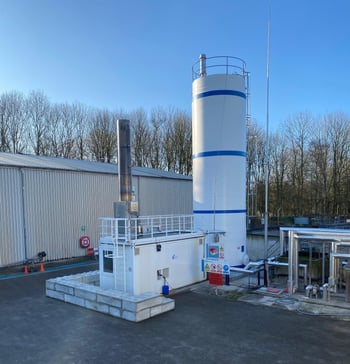The methanization of liquid industrial effluents generates energy in the form of a methane-rich biogas, which can then be recovered for use on site or sold to a mains gas supply company. Although this second option seems for the moment to be more feasible for large companies, it could soon be of real interest to a broader range of industrial operators.
Whether dissolved or in suspension, liquid industrial effluents contain substances that must be eliminated before discharge. Where these are organic substances, as is the case in the food and papermaking industries, there is a solution that allows them to be recovered for reuse and reduces production plant energy bills: methanization.
Methanization is a biological process that breaks down organic matter in the absence of oxygen. It is therefore an anaerobic digestion process with two key advantages: the reactor required is small in size and straightforward to install, and the system produces a methane-rich biogas.
Essential treatment steps

The biogas produced may be high in methane, but it also contains carbon dioxide (CO2) and hydrogen sulfide (H2S). So any industrial user wishing to recover it for reuse must pass it through one or more treatment steps. This process is part of what we refer to as industrial decarbonization. It becomes slightly more demanding if the treated biogas is to be injected into the public gas supply system — in which case the CO2 and sulfur compounds have to be removed — than if it is used to fuel an on-site boiler, in which case removing the sulfur compounds is usually sufficient. The capital investment and operating expenses involved in this more demanding level of treatment can be high, which explains why, for the time being at least, the option of selling gas into the mains supply system is taken up mainly by large companies that adopt the practice as an integral part of corporate policy.
The sale of biogas and connection to the mains supply system require industrial companies to enter into commitments regarding the quality and quantity of gas supplied. To meet the specifications throughout the year, the production volume and organic matter load (only the biodegradable fraction - approx. 66% - of which will be converted to biogas) of the effluent must remain constant. The use of methanization to produce biogas ultimately becomes an integral part of the company's business plan, since it adds what is effectively a new business line. So in addition to making paper or French fries, the company also becomes an energy generator.
A source of energy generation that is set to expand

As mindsets change (take the growing reluctance to flare biogas, for example), gas boilers are gradually replaced, and government incentives increase, more and more industrial companies are asking themselves whether they should be methanizing their liquid effluents to generate and sell energy.
The partnership with Econvert, the specialist in industrial solutions for the treatment of effluents by methanization and purification of the resulting biogas, now positions Saur Group and Saur Industrie France as expert partners for any industrial company interested in examining the feasibility of this type of project.
To find out more and take the next step, download our illustrated guide to methanization!
![[Illustrated guide] Using methanization to treat your effluents and generate energy - A guide](https://no-cache.hubspot.com/cta/default/7160320/edf1079b-0646-43e2-a7e7-18d056620526.png)